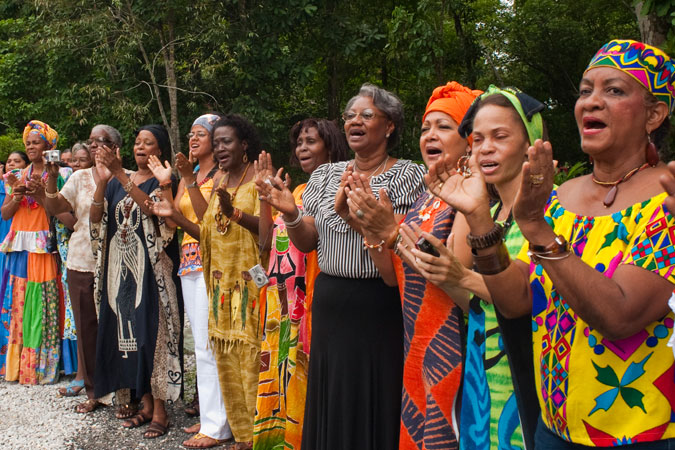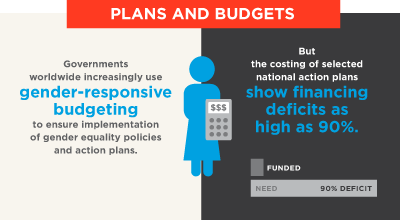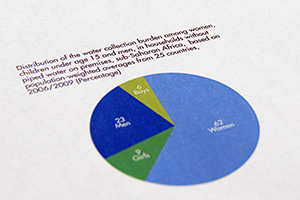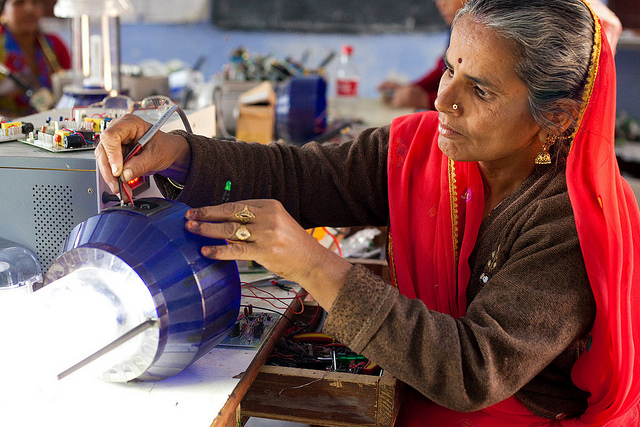SDG 17: Strengthen the means of implementation and revitalize the Global Partnership for Sustainable Development

Targets
Finance
- Strengthen domestic resource mobilization, including through international support to developing countries, to improve domestic capacity for tax and other revenue collection.
- Developed countries to implement fully their official development assistance commitments, including the commitment by many developed countries to achieve the target of 0.7 per cent of ODA/GNI to developing countries and 0.15 to 0.20 per cent of ODA/GNI to least developed countries ODA providers are encouraged to consider setting a target to provide at least 0.20 per cent of ODA/GNI to least developed countries.
- Mobilize additional financial resources for developing countries from multiple sources.
- Assist developing countries in attaining long-term debt sustainability through coordinated policies aimed at fostering debt financing, debt relief and debt restructuring, as appropriate, and address the external debt of highly indebted poor countries to reduce debt distress.
- Adopt and implement investment promotion regimes for least developed countries.
Technology
- Enhance North-South, South-South and triangular regional and international cooperation on and access to science, technology and innovation and enhance knowledge sharing on mutually agreed terms, including through improved coordination among existing mechanisms, in particular at the United Nations level, and through a global technology facilitation mechanism.
- Promote the development, transfer, dissemination and diffusion of environmentally sound technologies to developing countries on favourable terms, including on concessional and preferential terms, as mutually agreed.
- Fully operationalize the technology bank and science, technology and innovation capacity-building mechanism for least developed countries by 2017 and enhance the use of enabling technology, in particular information and communications technology.
Capacity building
- Enhance international support for implementing effective and targeted capacity-building in developing countries to support national plans to implement all the sustainable development goals, including through North-South, South-South and triangular cooperation.
Trade
- Promote a universal, rules-based, open, non-discriminatory and equitable multilateral trading system under the World Trade Organization, including through the conclusion of negotiations under its Doha Development Agenda.
- Significantly increase the exports of developing countries, in particular with a view to doubling the least developed countries’ share of global exports by 2020.
- Realize timely implementation of duty-free and quota-free market access on a lasting basis for all least developed countries, consistent with World Trade Organization decisions, including by ensuring that preferential rules of origin applicable to imports from least developed countries are transparent and simple, and contribute to facilitating market access.
Systemic issues
Policy and institutional coherence
- Enhance global macroeconomic stability, including through policy coordination and policy coherence.
- Enhance policy coherence for sustainable development.
- Respect each country’s policy space and leadership to establish and implement policies for poverty eradication and sustainable development.
Multi-stakeholder partnerships
- Enhance the global partnership for sustainable development, complemented by multi-stakeholder partnerships that mobilize and share knowledge, expertise, technology and financial resources, to support the achievement of the sustainable development goals in all countries, in particular developing countries.
- Encourage and promote effective public, public-private and civil society partnerships, building on the experience and resourcing strategies of partnerships.
Data, monitoring and accountability
- By 2020, enhance capacity-building support to developing countries, including for least developed countries and small island developing States, to increase significantly the availability of high-quality, timely and reliable data disaggregated by income, gender, age, race, ethnicity, migratory status, disability, geographic location and other characteristics relevant in national contexts.
- By 2030, build on existing initiatives to develop measurements of progress on sustainable development that complement gross domestic product, and support statistical capacity-building in developing countries.
The SDGs will mean little without the means to implement them. Finance, technology, capacities, partnerships and data are among the primary tools. Success also depends on a stable global economy and the ability of each country to make policy choices aimed at achieving all of the goals.

Gender equality is central to all of the SDGs, but often, women end up on the short end of the means of implementation, in whatever form. While governments increasingly use gender-responsive budgeting to direct funds to programmes that benefit women, these exercises have revealed huge funding gaps in what women need—up to 90 per cent [1].
Only 5 per cent of foreign aid funds had gender equality as a principle objective in 2012-2013 [2]. Just around a third of countries have an office for gender statistics, even though data distinguished according to gender is critical to defining the best ways to achieve gender equality [3]. Many countries simply do not know, for instance, how many women lack clean water or face abuse within their homes.
Women have the right to equal access to and benefits from each of the means of implementation. They also need to lead decisions being made — whether in ministries of finance, companies that produce technologies, statistical offices or institutions charged with global economic oversight.
UN Women’s efforts put women at the centre of the means of implementation through global leadership of the drive to adopt gender-responsive budgeting, a tool to realize commitments to women’s rights. Globally, regionally and nationally, the organization backs innovations extending the collection of data that make women’s issues visible and influence policies delivering on gender equality. UN Women helps women access technology, including to achieve the double dividend of empowerment and environmental sustainability.
Stories
UN agrees on ground-breaking gender indicators
UN Women was involved in the development of a new set of nine indicators to measure violence against women in all its aspects, as well as a separate minimum set of 52 gender indicators. The UN has also been working with national statistical offices to develop common standards and improve how they collect official data.
Lighting up lives: African women train as “barefoot” solar engineers
A shining example of south-south cooperation, UN Women in partnership with the Barefoot College in India, run a programme to train and empower marginalized women across the world with engineering skills, solar lamp kits, and the know-how to electrify their own and nearby villages and drive their local green economies.
Notes
[1] UN Women (2015), Handbook on Costing Gender Equality, p. 39.
[2] OECD DAC (2015), From commitment to action: Financing gender equality and women’s rights in the implementation of the Sustainable Development Goals.
[3] United Nations Economic and Social Council (2015), Review and appraisal of the implementation of the Beijing Declaration and Platform for Action and the outcomes of the twenty-third special session of the General Assembly.

